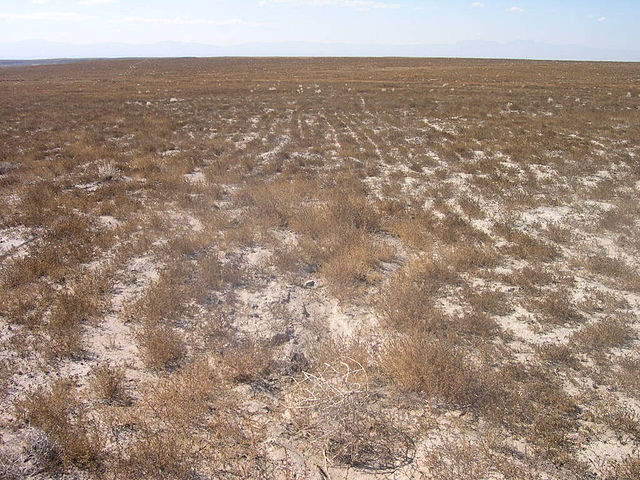Agricultural land is typically land devoted to agriculture, the systematic and controlled use of other forms of life—particularly the rearing of livestock and production of crops—to produce food for humans. It is generally synonymous with both farmland or cropland, as well as pasture or rangeland.
Photo showing piece of agricultural land irrigated and ploughed for paddy cultivation
Rangelands are grasslands, shrublands, woodlands, wetlands, and deserts that are grazed by domestic livestock or wild animals. Types of rangelands include tallgrass and shortgrass prairies, desert grasslands and shrublands, woodlands, savannas, chaparrals, steppes, and tundras. Rangelands do not include forests lacking grazable understory vegetation, barren desert, farmland, or land covered by solid rock, concrete and/or glaciers.
Red Desert rangeland in Wyoming. Water from melted snow pack can be seen on the ground. Such melting is the main source of surface water in Wyoming.
Weeds are all that remains in Idaho after overgrazing, wildfires, and subsequent invasion by non-native species. Russian thistle (Kali tragus) is the only plant species seen in this picture.
Konza Prairie
Buffalo grazing on rangeland in Crook County, Wyoming.





